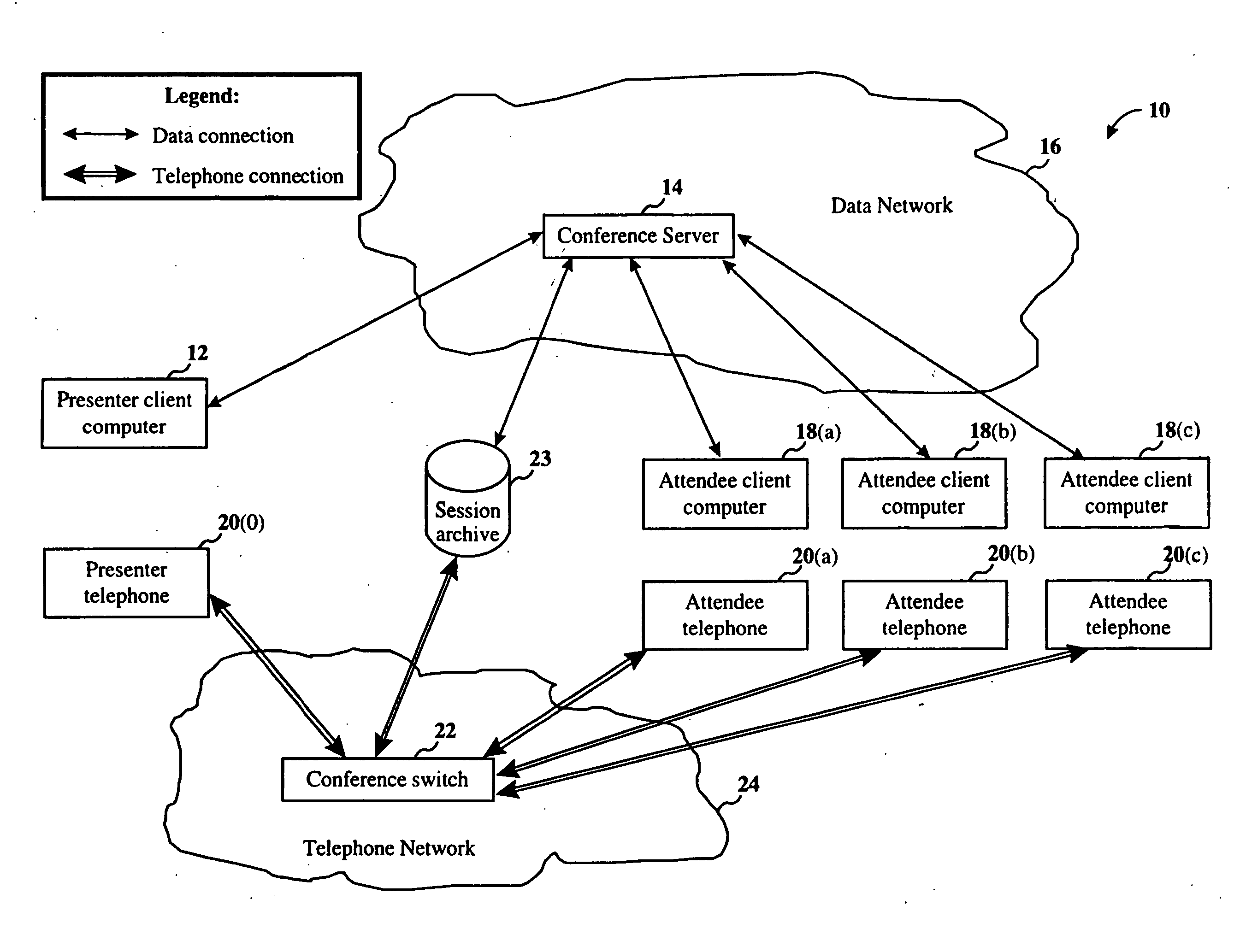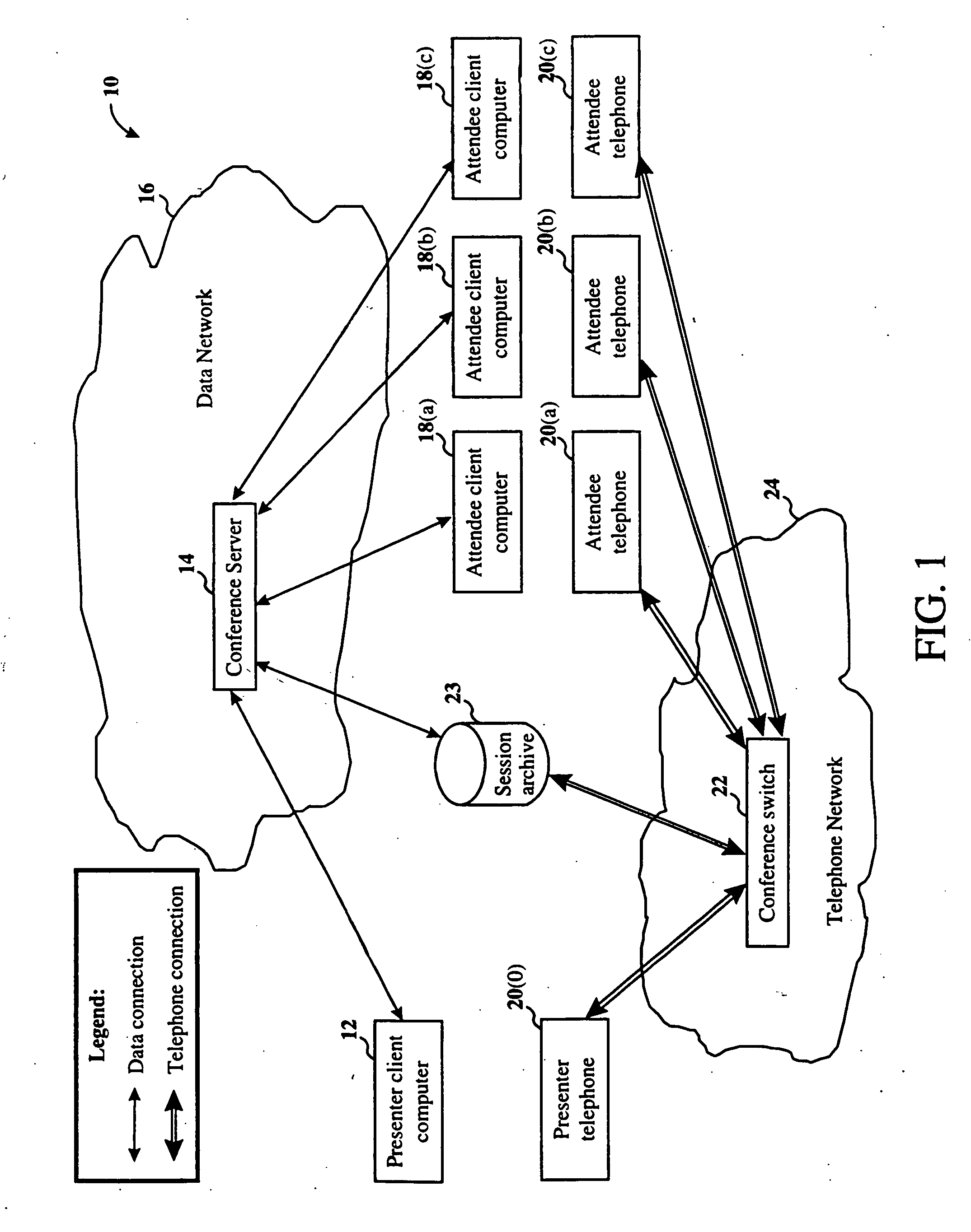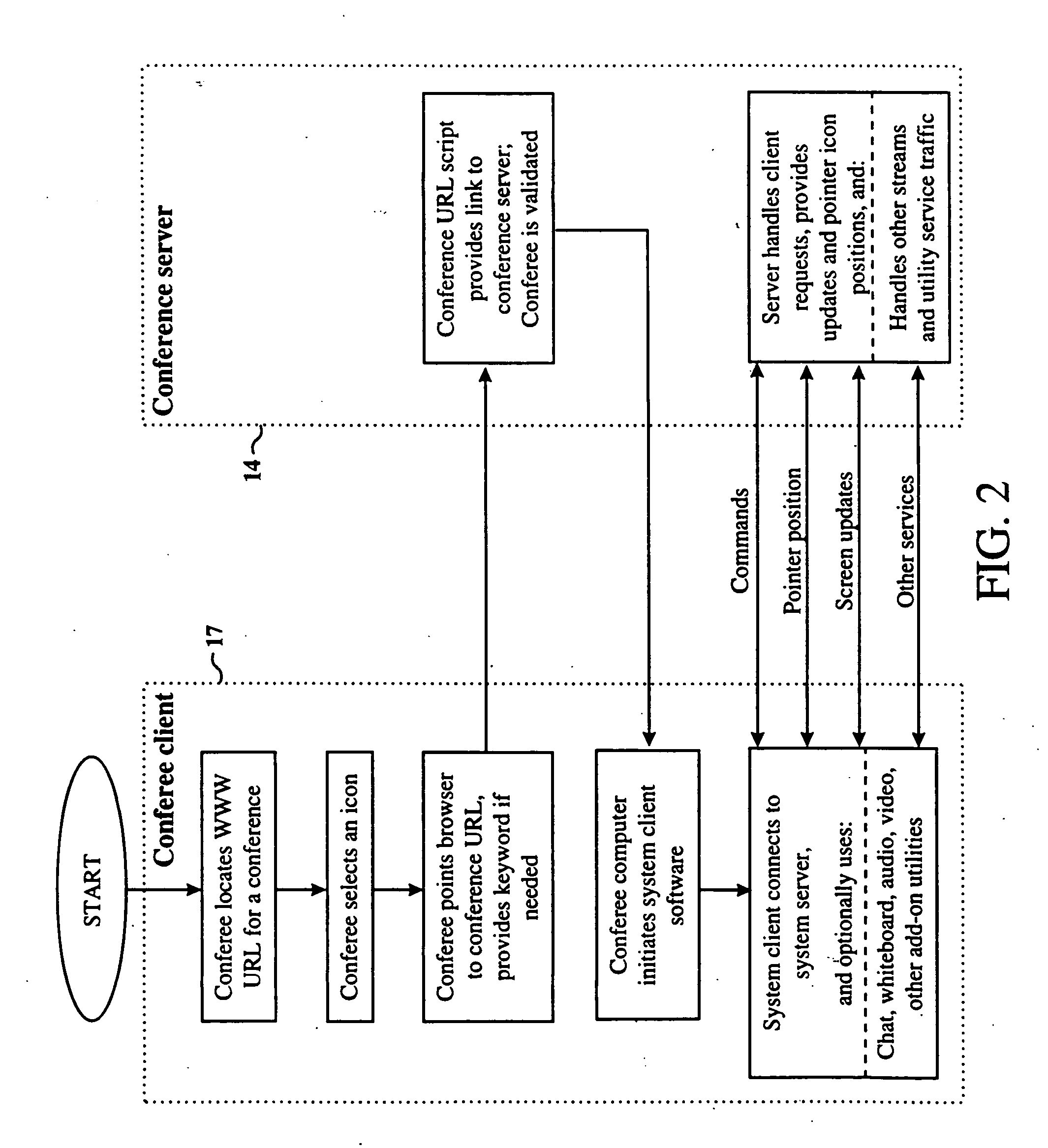Real-time, multi-point, multi-speed, multi-stream scalable computer network communications system
- Summary
- Abstract
- Description
- Claims
- Application Information
AI Technical Summary
Benefits of technology
Problems solved by technology
Method used
Image
Examples
Embodiment Construction
[0054]FIG. 1 shows a desktop conferencing system 10 according to one embodiment of the present invention. Desktop conferencing system 10 is shown with three attendee clients 18 and one presenter client 12. Following the arrows, presenter client 12 is connected to attendee client 18 through a conference server 14 and data network 16. The presenter and attendees may also participate in an ordinary telephone call or a conventional conference call using telephones 20 connected through conference switch 22. The voice conferencing might also be carried out through an audio connection on a data network; indeed, telephone network 24 and data network 16 could be the same.
[0055] The group of users can comprise from as few as one user, who might record a presentation or lecture or video-mail onto a session archive 23 for later distribution; or two people who wish to share information or collaborate on some work product; or a small group of users, as in a typical business conference call; to m...
PUM
 Login to View More
Login to View More Abstract
Description
Claims
Application Information
 Login to View More
Login to View More - R&D
- Intellectual Property
- Life Sciences
- Materials
- Tech Scout
- Unparalleled Data Quality
- Higher Quality Content
- 60% Fewer Hallucinations
Browse by: Latest US Patents, China's latest patents, Technical Efficacy Thesaurus, Application Domain, Technology Topic, Popular Technical Reports.
© 2025 PatSnap. All rights reserved.Legal|Privacy policy|Modern Slavery Act Transparency Statement|Sitemap|About US| Contact US: help@patsnap.com



